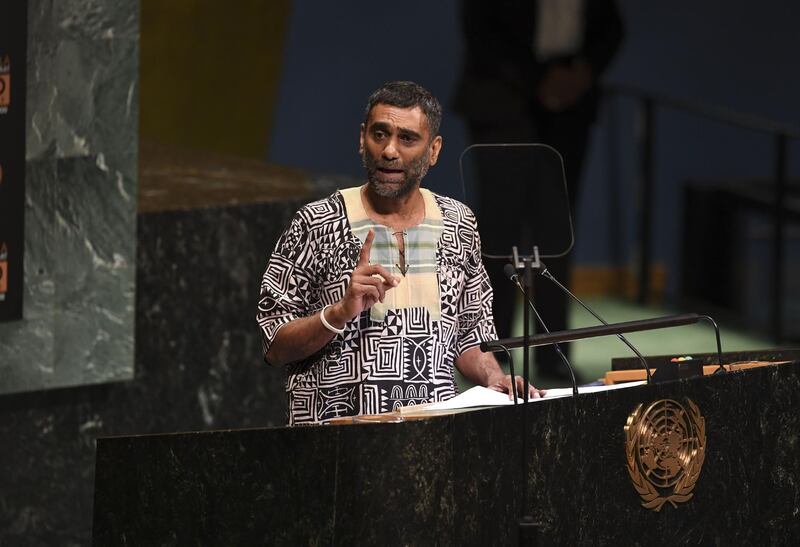Activists and governments should consider using the arts to engage the public on human rights issues, the new Secretary General of Amnesty International has said.
Kumi Naidoo said a new approach was needed to cut through the 24-hour news cycle and grab the public’s attention on important issues at a time when the average person in bombarded with information.
South African Mr Naidoo moved to Amnesty International from Greenpeace. He described his two months at the helm of the organisation as “a diary of tragedy” in which he has seen the devastation wrought in Raqqa, the squalor of the Moria refugee camp in Lesvos, and a backsliding of human rights globally.
How to translate these issues to a public at risk of sympathy fatigue and information overload is crucial to the fight for human rights in the future, said Naidoo.
“In a movement that is trying to resist injustice, part of what I believe we need to do, and we are exploring it, is to use arts and culture more in the way we try to communicate,” the 53 year old told The National at the One Young World summit in The Hague.
In particular, theatre and music “can somehow communicate tragedy in a way that doesn't put people off,” he said.
"87% of Afghan women experience at least one form of physical, psychological or sexual violence." - Dr Tamana Asey describes her journey to get forced hymen-testing criminalised in Afghanistan. ♀️
— One Young World (@OneYoungWorld) October 18, 2018
📹Watch live: https://t.co/xhPL7h5y6Y#OYW2018 #humanrights pic.twitter.com/1dBDqOwjoj
Some change-making activists are already using storytelling to get through to the public. In Afghanistan, doctor Tamana Asey and colleagues are planning a play to teach Afghans about the fight against forced hymen testing, to show there are no scientific, legal or religious justifications for the practice.
“Theatres work in Afghanistan,” she told the National. “They have to see the victim… If it was their wives, they wouldn’t accept it or show empathy, but if it is in the theatre, they will.”
As well as fictionalising accounts of living with human rights abuses and conflict, Naidoo said publicising personal stories, both positive and negative, is also an important element of breaking through the noise to reach people’s conscience.
_________
Read more:
Amnesty condemns US-led coalition over Raqqa civilian killings
US coalition airstrikes in Syria kill over 3,000 civilians: monitoring group
[ The ‘crazy club’: Inside the British propaganda trips that seek to legitimise Assad's barbarism ]
_________
"It's not only about showing the worst tragedies but also about showing the humanity of people,” he said.
A good example of using storytelling to highlight wider issues, Naidoo says, is the story of Nujeen Mustafa, a Syrian refugee teenager who uses a wheelchair who made her way to Germany.
Great conversation with the UN high commissioner for Human rights about the situation in Syria I’m glad to have met someone who still cares about Syria in zurich pic.twitter.com/njaJ6ao4nw
— Nujeen Mustafa (@NujeenMustafa) June 10, 2018
“We need to engage more in storytelling and bringing out the human side of these things, because people are more likely to engage in the real story of a human being leaving Syria, getting to Turkey, ending up in a camp. losing a child along the way, eventually making it to semi-decent life somewhere,” said Mr Naidoo.







